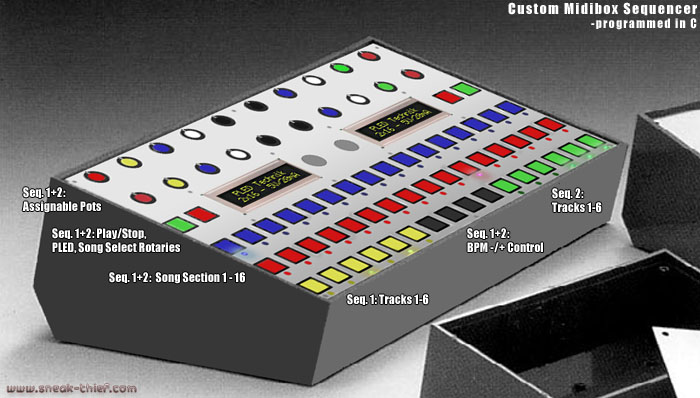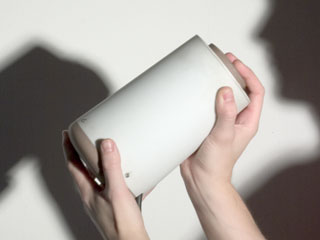Ancient History: The Polyrhythmophone
[ The First Drum Machine ]
Long before the 808/909 combo was cracking concrete from Goa to Mile Five, a man named Leon Theremin (famed for the musical gadget bearing his name, reputed to be the most difficult instrument to play) teamed up with music theorist Henry Cowell with the intention of inventing a way to create rhythmic patterns based on the harmonic overtone series. Cowell had invented musical compositions that, due to their harmonic complexity and percussive nature, were impossible to play on any keyed or stringed instrument. He began toying with strange time signatures and unplayably complex scales in 1915. The first Rhythmicon was completed in 1931, and could play any (or all) of sixteen preprogrammed rhythmic patterns, in accordance with Cowell's specifications. Pictured here, it can be seen to more closely resemble a subway turnstyle than any modern groovebox or drumsynth.
Three were built before both Theremin and Cowell moved on to other things. Record industry rumours place a semi-mythical working Rhythmicon in a variety of places and times, including in the hands of pop music producer Joe Meek during the sixties, with Pink Floyd in the seventies, Tangerine Dream in the 80's, and on various cult film soundtracks, such as Doctor Strangelove. Contrary to the myth that the only working model was destroyed in a laboratory fire in the fifties, all three still exist-- one in the Smithsonian, one at Stanford University, and one at the Theremin Center in Moscow, though only the Stanford model works anymore. Unfortunately, I could find no record of one ever being played live.
A software emulation of the Rhythmicon can be found here, though I have not had the time to try it out. More about this fascinating instrument can be found at mutelibtech.com. Also good for a visit is Leon Theremin's myspace page.
















